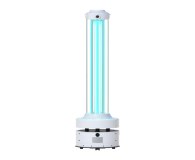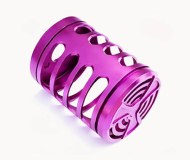 |
|
|
Matières premières
Brushing Silicone Rubber for Plaster Casting Cornice/Domes |
|
Cette page concerne les importateurs et exportateurs de Brushing Silicone Rubber for Plaster Casting Cornice/Domes Rechercher dans la catégorie : Matières premières Rechercher dans la catégorie : brushing, domes, cornice, rubber, plaster, silicone, casting |
Lundi 26 avril 2021
Quantité : 1 - Prix : 0,10 €
Medical disposable use ureteral access sheath for urology It is used for the establishment of surgical pathway for endoscopic surgery in Department of Urology. It helps endoscopy or other instruments to enter the urinary tract and provides a channel of continuous operation. And...
- 318118 - Shenzhen
- +86 199 2531 6571
Jeudi 07 juillet 2022
Quantité : 1 - Prix : 7000€ HT + frais d'e
État : modèle de démonstration, neuf, 2021. Prix exceptionnel de 7000€ HT + frais d'envoi (14000€ HT en vente neuf sur notre site). Marque : Boocax Robotics. Ce robot est équipé d'un module professionnel de désinfection par UV, qui peut remplacer les opérateurs pour pénétrer dans...
SAS World Led
- 47120 - Lévignac de Guyenne
- 07 67 18 43 84
Mercredi 06 mars 2024
Quantité : 10000pcs/p - Prix : 20USD--
Custom CNC Milling Service China custom CNC milling is a machining process used to machine high complex parts. A milling cutter used for custom CNC milling in China service can be moved along different axes for machining narrow blanks, grooves, outer contours, etc. With our China...
YS RAPID MANUFACTURING LIMITED
- ysrapid
- 518106 - shenzhen
- 8615817251032





